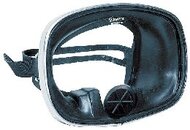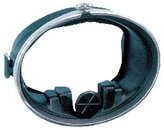Dom Perignon
Registered
Hello,
I snorkle a lot and when I go back to the surface the air expels too fast, which sometimes breaks the seal right around my nose, causing sea water to shoot into my eyes. For most people that would not be a big deal, but in my case any sea water in my eyes will ruin the next 10 min (painful + blinking non stop = I miss the show).
Holding the mask as I go up does help, but it's not practical since my right hand is busy holding my camera, and the left one is, on occasion, holding my diving lamp. (Yes, I do enjoy night snorkeling, and always carry my cam).
I've been wondering if a low volume mask would reduce this problem. The thinking would be that lens air in the mask would end up reducing the air that gets expelled on rapid ascent.
I snorkle a lot and when I go back to the surface the air expels too fast, which sometimes breaks the seal right around my nose, causing sea water to shoot into my eyes. For most people that would not be a big deal, but in my case any sea water in my eyes will ruin the next 10 min (painful + blinking non stop = I miss the show).
Holding the mask as I go up does help, but it's not practical since my right hand is busy holding my camera, and the left one is, on occasion, holding my diving lamp. (Yes, I do enjoy night snorkeling, and always carry my cam).
I've been wondering if a low volume mask would reduce this problem. The thinking would be that lens air in the mask would end up reducing the air that gets expelled on rapid ascent.





